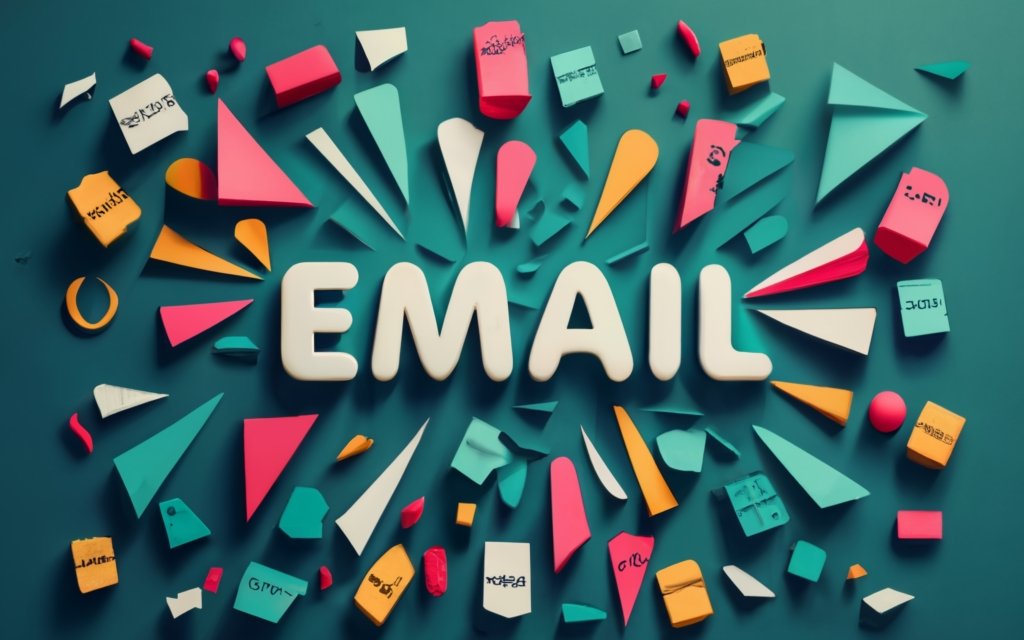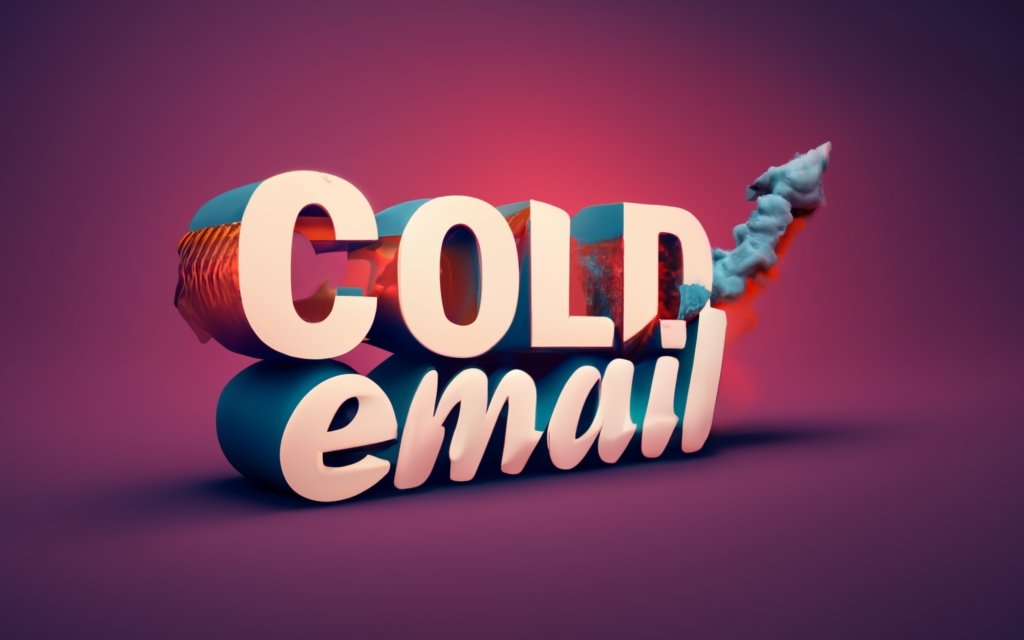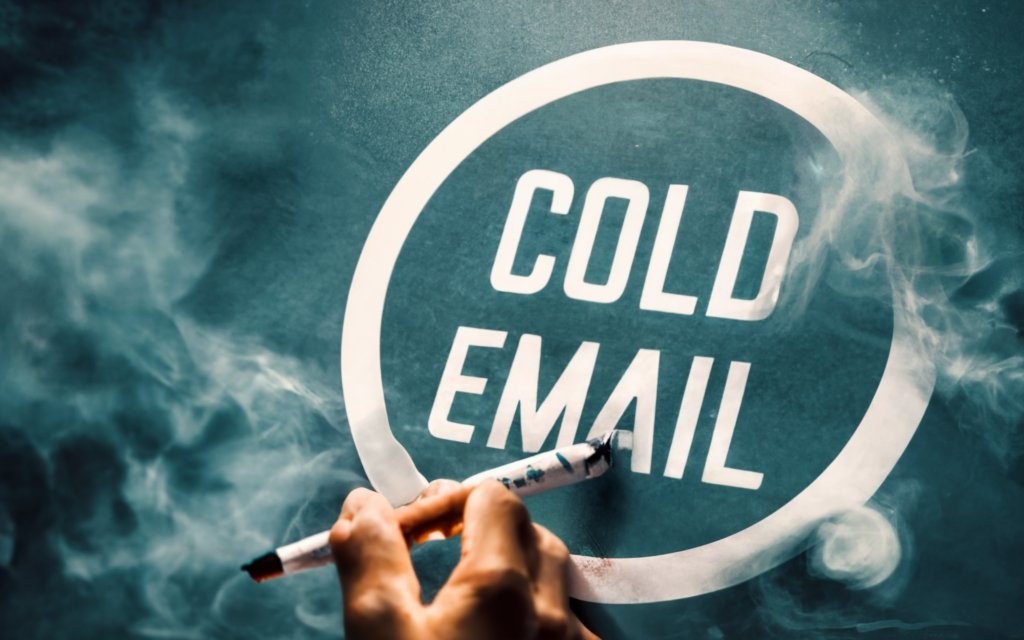You crafted the perfect cold email. Your offer is irresistible. Prospects will be banging down your door to buy, right? Not so fast. Without optimizing deliverability, your emails may never see the light of day.
Mastering email deliverability is a nuanced art. In this comprehensive guide, we’ll give you the keys to the inbox kingdom. You’ll learn how to craft emails that waltz past spam filters into the coveted primary inbox. We’ll reveal techniques to build stellar sender reputation, create quality content, and monitor metrics.
Follow our methods to transform from deliverability dunce to inbox expert. Read on to begin your quest toward supreme deliverability.
Defining Cold Email Deliverability
Cold email deliverability refers to the ability of a cold outreach email to make it past spam filters and into the recipient’s inbox.
When you hit send on a cold email campaign, the recipient’s email service provider (ESP) like Gmail will run various checks on your message before allowing it into the inbox. These include:
- Authentication checks – Does your email have proper SPF, DKIM, DMARC authentication in place?
- Reputation checks – What is the reputation of your IP address or domain?
- Content checks – Does your email content seem spammy or contain blocked words?
If your email passes these checks, the recipient will see it in their main inbox folder. If it fails, it may go to the spam folder or promotions tab, or not get delivered at all.
Deliverability determines whether your cold email campaign reaches its intended targets. It directly impacts the success of your outreach efforts.
Importance of Inbox Placement
You don’t just want your cold emails to be delivered. You want them to land in the prospect’s main inbox folder.
Emails that go to the spam folder or promotions tab have very little chance of being opened. According to Validity research, only 7% of emails in the promotions tab get opened.
Even if you’ve written the perfect cold email, it won’t matter if the prospect never sees it. That’s why inbox placement is so critical.
Some key advantages of getting your cold emails into the inbox include:
- Higher open rates – Emails in the inbox have open rates many times higher than other folders.
- More conversions – You can only convert prospects who open and read your message.
- Better sender reputation – Inboxing builds trust and improves your reputation over time.
In short, if your cold emails consistently miss the inbox, your campaigns will suffer from low engagement, poor conversion rates, and damage to your sender reputation.
Consequences of Poor Deliverability
Common consequences of struggling with cold email deliverability include:
- Low open and response rates – If your emails go to spam or promotions, fewer people will open and reply.
- Hurt sender reputation – Too many bounces, spam complaints, or spam trap hits hurts your domain and IP reputation.
- Blocklists and blacklists – Ending up on ISP blacklists makes it hard to recover your sending ability.
- Wasted time and resources – You spend time creating emails and outreach that never see the light of day.
- Loss of contacts – Recipients who can’t unsubscribe easily may complain and cause you to lose their contact.
- Decreased conversions – All your campaign efforts are futile if emails never reach the inbox.
Damaged domain reputation and blocklisting can become catastrophically bad if not addressed early on. It’s essential to be proactive and monitor your cold email deliverability.

Tracking Deliverability Rates
To assess your current deliverability and watch for potential issues, pay attention to these key metrics:
Marketing Email Benchmarks
For cold email marketing campaigns, aim for:
- Inbox placement rate: At least 85-90%
- Open rate: At least 20-30%
- Spam complaint rate: Less than 0.1%
- Bounce rate: Less than 5%
Transactional Email Benchmarks
For transactional cold emails like receipts and alerts, aim for:
- Inbox placement rate: At least 90%+
- Open rate: At least 60-80%
- Spam complaint rate: Less than 0.05%
- Bounce rate: Less than 3%
Falling short of these deliverability benchmarks indicates you need to revisit your outreach strategy or sender reputation. Optimizing early makes a big difference in the long run.
To summarize, cold email deliverability determines whether your thoughtful outreach lands in the inbox or spam folder. Given its direct impact on campaign success, monitoring and improving inbox placement should be a priority. Paying attention to key metrics and benchmarks helps you identify potential deliverability problems before they become catastrophic.

The Journey of a Cold Email
To understand what impacts deliverability, let’s walk through the key steps of a cold email’s journey:
Step 1 – Your cold email campaign is created
This involves compiling your list of prospects, drafting your message, and setting up the send.
Step 2 – Emails are sent to the prospect’s ESP
Once your campaign is scheduled, your ESP will start sending emails out to the recipients.
Step 3 – Authentication and reputation checks occur
As soon as your email hits the recipient’s mail server, authentication and reputation checks happen behind the scenes:
- Authentication checks – The ESP checks SPF, DKIM, and DMARC records to confirm the email comes from who it claims.
- Reputation checks – The reputation of your IP address and domain are assessed based on past sending patterns.
Step 4 – Spam filters analyze email content
Next, the content of your email is scanned for spam triggers like:
- Suspicious links and attachments
- Too many images
- Spammy words and phrases
- Low text-to-HTML ratio
Step 5 – Emails are delivered to the inbox or spam
Based on all the checks, a final verdict is reached on where your email lands – the inbox or spam folder.
Step 6 – The prospect takes action (or not)
Once in the inbox, the prospect may open, click, reply, or mark your email as spam. Their engagement directly impacts future deliverability.

How ISPs Filter Cold Emails
Understanding how ISPs filter emails can help you avoid deliverability pitfalls. Here are the key checks they perform:
Reputation Checks
ISPs maintain a reputation score for every sending IP and domain based on past behavior. Factors like:
- Low spam complaints – Under 0.1% is best.
- Low bounce rate – Under 5% is solid. Too many bounces imply a bad list.
- No blacklistings – Being on a blacklist devastates future deliverability.
- Engagement – Recipients opening and clicking emails signals good reputation.
Authentication Checks
Proper email authentication tells ISPs your emails are legitimate. Must-haves include:
- SPF – Prevents spoofing by specifying authorized sending servers.
- DKIM – Cryptographically signs emails to prove authenticity.
- DMARC – Aligns SPF and DKIM for domain verification.
Lack of proper authentication is a red flag for spam filtering.
Content Checks
ISPs analyze email content for:
- Spam keywords – Words like “free” and “limited time” can trigger filters.
- Spammy links and images – Too many links or images raises suspicion.
- Low text-to-HTML ratio – Filters prefer more text content than HTML.
- Suspicious attachments – Attached files can signal potential malware.
Even if your authentication checks out, spammy content can sabotage deliverability. Avoid dodgy selling tactics and over-the-top wording.
In summary, ISPs use a combination of factors related to reputation, authentication, and content to filter incoming emails. Understanding these mechanisms is key to avoiding the spam folder. Optimizing each area makes the end-to-end deliverability journey smoother.

Sending Limits and Volume
ISPs establish daily sending limits for each domain and IP address as an anti-spam measure. Exceeding these limits leads to soft-bouncing of emails.
For example, Gmail has a daily send limit of 2000 emails per user. Outlook.com’s limit is 1000 emails daily.
To avoid hitting send limits:
- Gradually increase sending volume when ramping up campaigns.
- Break up large campaign batches into smaller daily sends.
- Use multiple reputable sending domains and IPs.
Sudden spikes in volume are suspicious to ISPs and damage deliverability. Build volume slowly and steadily.
Bounces and List Hygiene
Hard bounces occur when emails sent to invalid addresses fail permanently. Even 1-2% hard bounces can hurt sender reputation.
Soft bounces happen when temporary issues prevent email delivery, such as:
- Full inbox
- Server downtime
- Sudden sending spike
Too many soft bounces also look bad. Maintain your list to avoid bounces:
- Remove hard bounced emails permanently.
- Re-attempt soft bounced emails 1-2 times before removing.
- Scrub your list of inactive, unengaged contacts.
- Use double opt-in when collecting new emails.
Spam Complaints
Recipient spam complaints catastrophically tank deliverability. A complaint rate of even 0.1% can indicate deliverability issues.
Some common reasons recipients report emails as spam:
- Confusing opt-out and preferences options. Make unsubscribing super easy.
- Sending unwanted content. Ensure your emails are relevant and personalized.
- Too much email volume. Reduce send frequency for unengaged contacts.
Monitor your complaint rate both for ISPs overall and for individualCampaigns. A sudden spike in complaints requires swift action to resolve.
Low Engagement
Low open and click rates signal recipients aren’t interested in your emails. Consistently low engagement hurts sender reputation.
Aim for open rates of at least 20-25% for cold emails. If rates fall below 15%, your future deliverability will suffer.
Re-engage inactive subscribers with:
- Better email personalization and segmentation.
- More valuable, relevant content.
- Win-back campaigns for non-openers.
Ultimately, purge chronically unengaged contacts from your outbound lists.
Hitting Spam Traps
Spam traps are fake email accounts set up by ISPs to identify and penalize spammers. They are a death knell for inboxing.
Types of spam traps:
- Pristine – Brand new, empty accounts solely for catching spammers.
- Recycled – Inactive accounts reclaimed by ISPs after months of inactivity.
A single spam trap hit severely hurts your sender score. Avoid traps by:
- Never buying or scraping email lists.
- Promptly removing hard bounces.
- Pruning inactive subscribers.
- Verifying and double opt-in for new emails.
Using Prohibited Tactics
Some egregious email tactics are banned by CAN-SPAM and will absolutely demolish deliverability:
- Deceptive subject lines – Don’t use false or misleading headings.
- Invalid unsubscribe options – Opt-outs must work and be honored quickly.
- Fake sender info – From name and address must be accurate.
- Lacking physical address – Include a valid street address in emails.
Also avoid more subtle spammy tactics like excessive images, all CAPS, and over-the-top wording.
Bottom line, avoid anything misleading, suspicious, or overtly promotional in your campaigns. Take a subtle, conversational, and transparent approach.
Lack of Personalization
Impersonal batch-and-blast emails are highly ineffective for cold outreach. Without personalization, your emails will be low quality.
Each cold email should feel written directly to the recipient. Tactics include:
- Name personalization – Use first name, company name, etc.
- Relevance – Tailor your content to the prospect’s needs.
- Dynamic content – Customize messages for different segments.
- Valid consent – Only email those who agree to your outreach.
Putting in the effort to personalize and craft targeted messaging has a huge impact. No one wants to receive a generic sales pitch. Treat each outreach like a personalized conversation.
In summary, poor deliverability usually arises from some combination of technical errors, suspicious behavior, low engagement, and low-quality approaches. Understanding the root causes lets you course correct early.

Seed Testing
Seed testing lets you assess inbox placement across different ISPs before sending a full campaign.
It involves sending test emails to a seed list of real addresses and monitoring the results.
How seed testing works:
- Compile seed list addresses from major ISPs like Gmail, Outlook, Yahoo.
- Send test emails to the seed list from your ESP.
- Check seed inboxes to see if your test emails arrived safely in the inbox.
- Tweak and re-test until seed tests show good inbox placement.
- Gradually ramp up your real campaign after successful seed testing.
Seed testing is extremely useful for previewing inbox placement, especially when sending from a new domain, IP, or ESP.
Paid seed testing tools include:
- GlockApps – Provides detailed delivery reports and inbox placement breakdown.
- MailDiagnostics – Tests major webmail providers and gives an overall deliverability score.
- MailTestPro – Offers detailed insights into why emails get flagged or filtered.
Take time to test with seed accounts before each new cold email campaign. The early insight will pay dividends.

Placement Testing Tools
Placement testing tools analyze your inbox placement at major ISPs. They show whether your emails go to inbox vs. spam folder.
Gmail Postmaster Tools
Google’s free Postmaster Tools provides:
- Gmail inbox placement percentages for your sending domains.
- Catch-all spam rate for all spam complaints.
- Authentication issues causing spam filtering.
- Recent spam increases and why emails get flagged.
Checking Postmaster Tools often gives advance warning of potential Gmail deliverability problems.
Return Path Inbox Placement
Return Path’s paid Inbox Placement tool offers:
- Detailed ISP-level inbox placement breakdowns.
- Analysis of your sender reputation.
- Comparison to industry benchmark placement rates.
For full visibility into your inbox placement beyond just Gmail, Return Path is invaluable.

Reputation Monitoring Tools
Monitoring your sender reputation lets you catch issues proactively before they blow up.
SenderScore
SenderScore provides a quick snapshot of:
- Your overall domain reputation on a 1-100 scale.
- Any recent sharp reputation drops.
- Authentication records helping or hurting you.
- Blacklist status across major lists.
Checking your SenderScore weekly can alert you to any growing issues.
MX Toolbox
MX Toolbox offers blacklist monitoring across major ISPs to see if your IP or domain ends up penalized anywhere.
Spam Content Detection Tools
These tools scan your email content for potential spam triggers before sending a campaign.
Mail-Tester
Mail-Tester analyzes email content for:
- Spam keywords and phrases.
- Missing SPF/DKIM/DMARC records.
- Spammy HTML attributes.
- Other common red flags.
It provides an overall spam score and suggestions to improve.
SpamAssassin
SpamAssassin is an open source content filter tool. It looks for:
- Bayesian spam probability scoring.
- Known spammy text.
- Suspicious links, images, attachments.
- HTML and JavaScript tricks.
While manual, it gives you granular insights into risky content.
Tracking Engagement Metrics
High-level engagement metrics provide the earliest smoke signals of potential deliverability issues.
Open and Click Rates
A noticeable sustained drop in open and click rates could indicate emails being flagged or sent to tabs.
- Benchmark targets:
- Opens: 20-30%+
- Clicks: 2-5%+
- Investigate if rates decrease by more than 5% over a few weeks.
Complaint and Bounce Rates
Sudden spikes in complaint or bounce rates signify worsening reputation.
- Benchmarks:
- Complaints: < 0.1%
- Bounce rate: < 5%
- Take action if complaints exceed 0.15% or bounces exceed 10%.
Unsubscribe and Conversion Rates
Watch for abnormal changes in opt-outs or conversions.
- Benchmarks:
- Unsubscribe rate: < 0.2%
- Conversion rate: Varies
- Allowable unsubscribes depend on list size.
- Decreasing conversions directly hurts ROI.
Falling short of benchmarks in any area warrants inspection into potential deliverability issues or campaign optimization opportunities.
In summary, testing and monitoring tactics provide visibility into your current deliverability health. Leverage a combination of tools and metrics to stay ahead of problems, rather than trying to recover once your campaigns are already crippled. An ounce of prevention is truly worth a pound of cure when it comes to inbox placement.

Building Your Sender Reputation
Your domain and IP reputation directly impact email deliverability. Follow these best practices to build good reputation.
Collecting Valid Consent
Having explicit consent to contact prospects is essential for inbox placement. Tactics include:
- Clear opt-in checkboxes – When collecting emails, use unambiguous opt-in language like “I agree to receive emails”.
- Double opt-in – After signing up, confirm subscriptions by having prospects click a verification link. This ensures emails are valid and engaged.
- Re-permissioning – If contacting old leads, give them an easy way to re-opt-in to hear from you.
Always honor opt-out requests immediately. Sending to contacts without valid consent tanks your sender reputation.
Making Unsubscribing Easy
Never make it hard for prospects to unsubscribe or change preferences. Easy opt-outs build sender credibility.
- Include unsubscribe links in your email footer.
- Use preference centers so prospects can choose subscription options rather than outright opting-out. For example:
- Send me all updates
- Send me only relevant promotions
- I no longer wish to receive any emails
- Automatically honor opt-out requests – Never require prospects to jump through hoops to unsubscribe.
- Avoid confirmation pages after unsubscribing – These frustrate prospects and lead to spam complaints.
The easier you make it to opt-out, the fewer abuse reports you’ll get. Don’t risk your sender score by obstructing unsubscribes.
Maintaining List Hygiene
Keep your mailing lists lean and clean. Here are tips:
- Remove hard bounces – Permanently delete hard bounced addresses to avoid throttling.
- Re-attempt soft bounces 1-2 times before removing to confirm invalidity.
- Scrub inactive contacts – Export and remove non-engaged subscribers from your active sending lists.
- Verify new contacts – When adding fresh contacts, use tools to confirm email validity before sending.
- Use double opt-in – As mentioned before, confirm new sign-ups by having prospects verify subscription via email.
Keep overall list bounce rates under 5% and complaint rates under 0.1%. Prune your contact database routinely.
Avoiding Spam Traps
Steer clear of spam traps. They demolish your sender score. Tactics to avoid traps:
- Never buy email lists – Purchased lists are ripe with spam traps and invalid addresses.
- Build your own opt-in lists using ethical permission-based methods like giveaways, content downloads etc.
- Confirm new emails – Validate fresh prospects before adding to your send lists. Services like NeverBounce and Hunter can verify email validity.
- Remove inactive contacts – Recycled and abandoned emails get reclaimed as spam traps. Prune dormant subscribers.
One spam trap hit can undo months of reputation building. Be vigilant to keep your lists squeaky clean.

Using Proper Sending Infrastructure
Your technical sending infrastructure impacts email deliverability. Optimize these key elements:
Authenticating with SPF, DKIM, DMARC
Proper authentication is mandatory for inbox placement.
- SPF prevents spoofing by validating sending servers.
- DKIM cryptographically signs emails to prove authenticity.
- DMARC aligns SPF and DKIM, telling ISPs your mail is protected.
Missing or broken authentication results in spam folder filtering. Set up SPF, DKIM, and DMARC for all your sending domains.
Warming Up New Domains
When using a fresh domain, take time to warm it up first. This builds sender familiarity and reputation with ISPs.
New domain warm-up steps:
- Send yourself emails from the new domain.
- Gradually mix in emails to engaged current contacts.
- Slowly increase daily volume over several weeks.
- Avoid large batches, spikes in sending, or marketing blasts until warmed up.
Warm-up services like Mystrika automate this process.
Choosing Shared vs. Dedicated IPs
Most ESPs use shared IP pools by default. Multiple senders share IPs.
Benefits of shared IPs:
- Quick and inexpensive setup.
- ESPs manage reputation for you.
- Higher email volume improves deliverability.
Downsides of shared IPs:
- Other senders can damage your reputation.
- Less control over inbox placement.
- Throttling and slower deliverability.
Dedicated IPs offer more control but require meticulous reputation management. Only high-volume senders need them.

Crafting Quality Content
Even with pristine infrastructure, low-quality content hurts deliverability. Avoid these common pitfalls:
Personalizing Messages
Spammy batch-and-blast emails are surefire inbox killers. Personalize every cold email instead. Options include:
- Name personalization – Include first name, company name, etc.
- Dynamic content – Customize messages for different segments and verticals.
- Relevance – Tailor content to the prospect’s needs and interests.
- Valid consent – Only email those who explicitly agree to your outreach.
Taking the time to craft targeted, personalized email content pays dividends through improved engagement and sender reputation.
Avoiding Spammy Language
Some email verbiage sets off spam filters. Avoid:
- Excessive punctuation – Lines ending in !!! or ??? come across as spammy.
- ALL CAPS – Full capitalized words look like spam headlines. Use sentence case.
- Over-the-top urgency – “Act now before it’s too late!” etc.
- Buzzwords – Terms like “Unbelievable deal”, “Free trial”, “Earn money fast”.
- Link overuse – Too many links clutter copy and raise suspicion. Keep to 1-2 links max.
Keep your language conversational, sincere, and subtle. Use natural phrasing tailored to the recipient.
Sending Valuable Content
Only send content your prospects will find useful and relevant. Tactics include:
- Deliver on your value proposition – If you promise tips & tricks, don’t just pitch your product.
- Consultative approach – Position yourself as an advisor rather than a salesman.
- Helpful resources – Include use case examples, FAQs, “How-to” guides etc.
- Segmented content – Tailor content for different user groups.
- Educational approach – Focus on informing over selling.
Valuable email content drives engagement. Salesy self-promotion does the opposite. Think of helpful info prospects want to read.
Segmenting Your List
Divide your list into granular segments, then send targeted content to each.
Ways to segment your list:
- By lead source
- By industry
- By lead stage
- By user persona
- By engagement level
- By customer lifecycle stage
Emails laser-targeted to different segments get higher open and response rates. Segmentation also lets you control email frequency appropriately.
In summary, optimizing your content, infrastructure, and reputation takes diligence but pays off exponentially in inbox placement and campaign performance over time.

Tips for Gmail
Reaching the Gmail Inbox
Gmail’s sophisticated filters make it tricky to consistently land in the primary inbox. Strategies to inbox with Gmail include:
- Send relevant content – Email people who will actually appreciate your messages. Irrelevant content gets flagged as spam.
- Personalize – Impersonal batch emails get shunted to other tabs or spam. Add personal touches.
- Honor unsubscribes – If someone opts out, remove them immediately. Gmail tracks your compliance.
- Increase engagement – Messages Gmail users engage with (open, click, reply) are favored by filters.
- Use Postmaster Tools – Monitor Gmail spam rate, authentication issues, and reputation.
If your content interests recipients and they show healthy engagement, Gmail will reward you with inbox placement. No shortcuts exist – good sending behavior is required.
Managing the Gmail Promotions Tab
Many marketers fixate on avoiding Gmail’s promotions tab. But the reality is:
- Users expect marketing emails in the Promotions tab – They check this tab for deals and offers. Trying to force your emails into the primary inbox violates user expectations.
- Forcing emails to the primary inbox can backfire – Tactics like using SMS-style from names, hiding unsubscribe links etc. often end up flagged as spam when Gmail catches on. Don’t try to trick their filters.
- Promotions still drive ROI – Users know where to look for promotional emails. Being in the promotions tab doesn’t preclude driving revenue.
Rather than fight the system, focus on sending great content recipients want to open regardless of tab placement.
Making Unsubscribing Easy
As mentioned before, always make it easy for recipients to instantly opt out of your emails. Gmail has integrated unsubscribe buttons at the top of marketing emails. Embrace this feature instead of resisting it. Easy opt-outs build sender credibility.
For transactional emails, include an unsubscribe link in your footer or header. Avoid making prospects jump through hoops or confusing preference center mazes. The more frictionless you make unsubscribing, the more deliverability leeway you’ll get.
Warming Up New Senders
When starting to send from a new domain, take time to gradually ramp up volume. Even though Gmail cares more about domain reputation than IP rep, you still need to build trust as a new sender.
- Week 1 – Send to yourself and a few engaged contacts
- Week 2 – Increase to about 50 emails per day
- Week 3 – 100 emails per day
- Week 4 – 200 emails per day
- Week 5 – 500 emails per day
Build volume slowly over 4-6 weeks. Avoid huge batches right away. This warm-up process trains Gmail filters that you’re a legitimate sender.

Tips for Other Major ISPs
Beyond Gmail, use these tips to inbox with major providers:
Outlook.com
- Authenticate emails (SPF/DKIM/DMARC)
- Include unsubscribe footer link
- Send valuable content subscribers want
- Slowly build volume if new sender
Yahoo & AOL
- Double opt-in and list hygiene is crucial
- Include postal address
- Timely unsubscribe honoring is critical
- Engagement hints at good reputation
iCloud
- Apple is strict – build trust slowly
- Warm up new senders gradually
- Personalize content
- Avoid spam words and tactics
The common thread is using ethical sending approaches tailored to what each ISP prioritizes. There are no shortcuts to inbox placement – you must earn it through good sender behavior.

Email Deliverability Tools
A wide variety of paid and free tools exist to help improve and monitor your cold email deliverability.
Inbox Placement Testing
- GlockApps – Paid service provides detailed inbox placement breakdown across ISPs.
- Mail-Tester – Free tool analyzes overall inbox placement chances.
Reputation Monitoring
- SenderScore – Free snapshot of your domain reputation and sender trust.
- MX Toolbox – Check email blacklist status across ISPs.
Authentication Checking
- SPF Survey – Test SPF records for issues preventing authentication.
- DMARC Analyzer – Checks DMARC records and offers tuning advice.
Spam and Content Scanning
- SpamAssassin – Open source content filter identifying spammy email attributes.
- SpamTester – Scans for issues like blocked images, suspicious links, spammy words.
Email Warm-Up
- Mystrika – Gradual automated warm-up for new domains and IPs. Comes with 1 free warmup slot.
Conclusion and Key Takeaways
Mastering cold email deliverability requires diligence – there are no quick hacks or shortcuts. By focusing on these core areas, your campaigns will consistently reach inboxes:
- Monitoring and testing deliverability regularly to catch issues proactively.
- Building sender reputation through ethical list building, engagement, and compliance.
- Proper technical setup including IP warming, authentication, and correct configurations.
- Analyzing campaign metrics like open rates, complaint rates, and bounce rates.
- Personalized, relevant content that provides value and builds trust over time.
- Easy unsubscribes to avoid frustrated recipients marking you as spam.
With a methodical, well-rounded approach combining these elements, your cold email success rates will skyrocket. Don’t leave deliverability as an afterthought – start focusing on it from your very first campaign.

Summary
Optimizing your cold email deliverability takes diligence, but pays dividends in higher inbox placement and response rates over time. Here are the key lessons:
- Deliverability refers to how well your cold emails pass ISP filters to reach the inbox. Focus on inbox placement rate rather than vague delivery rate.
- Good deliverability leads to more opens, clicks, and conversions. Poor deliverability hurts sender reputation and cripples campaign ROI.
- Authentication, reputation, content, and engagement all impact inbox placement. Understand how these factors work.
- Test frequently with seed accounts and inbox placement tools. Monitor metrics like open rates for red flags.
- Build great reputation through permission-based outreach, easy opt-outs, and list hygiene.
- Craft personalized, relevant messages with value. Avoid spammy language, tactics, attachments.
- Gradually warm up new domains and IP addresses before launching campaigns.
- Segment your list by engagement level, industry, etc. and tailor content accordingly.
- Make unsubscribing frictionless. Spam complaints destroy deliverability.
With focus in these areas, your cold email success rates will continuously improve. Master email deliverability and open the inbox floodgates.
Frequently Asked Questions
Q: How often should I test my cold email deliverability?
A: Test your deliverability before launching any new cold email campaign. Ongoing, test inbox placement weekly or monthly to catch potential issues early.
Q: What is the best email authentication setup?
A: Use SPF, DKIM, and DMARC in alignment for best authentication. This proves your emails are legitimate and protects against spoofing.
Q: How do I recover from a damaged sender reputation?
A: Stop sending emails for 1-2 weeks to reset your reputation. Then slowly rebuild trust by only emailing highly engaged contacts with relevant content.
Q: Should I buy an email list for my cold outreach?
A: Never buy email lists. They are prone to containing spam traps and invalid addresses which destroy deliverability. Always build your own opt-in list.
Q: How quickly should I remove hard bounces?
A: Instantly and permanently delete any emails that hard bounce from your contact list. Even 1-2% hard bounces can badly hurt your sender score.
Q: What is an acceptable complaint rate threshold?
A: 0.1% is typically the maximum complaint rate you can tolerate before deliverability suffers. Even better is 0.05% or lower.
Q: How do I avoid landing in the Gmail promotions tab?
A: Don’t try to trick the Gmail filter. Instead, send great content your subscribers want to open regardless of tab placement.
Q: How many cold emails can I send per day?
A: Start with 50-100 emails daily from a new domain, and slowly scale up week-over-week as you build sender reputation.
Q: Should I warm up a new IP address before sending campaigns?
A: Yes, absolutely. Take 1-2 weeks sending low volumes from a new IP before launching full campaigns. This establishes positive reputation.

